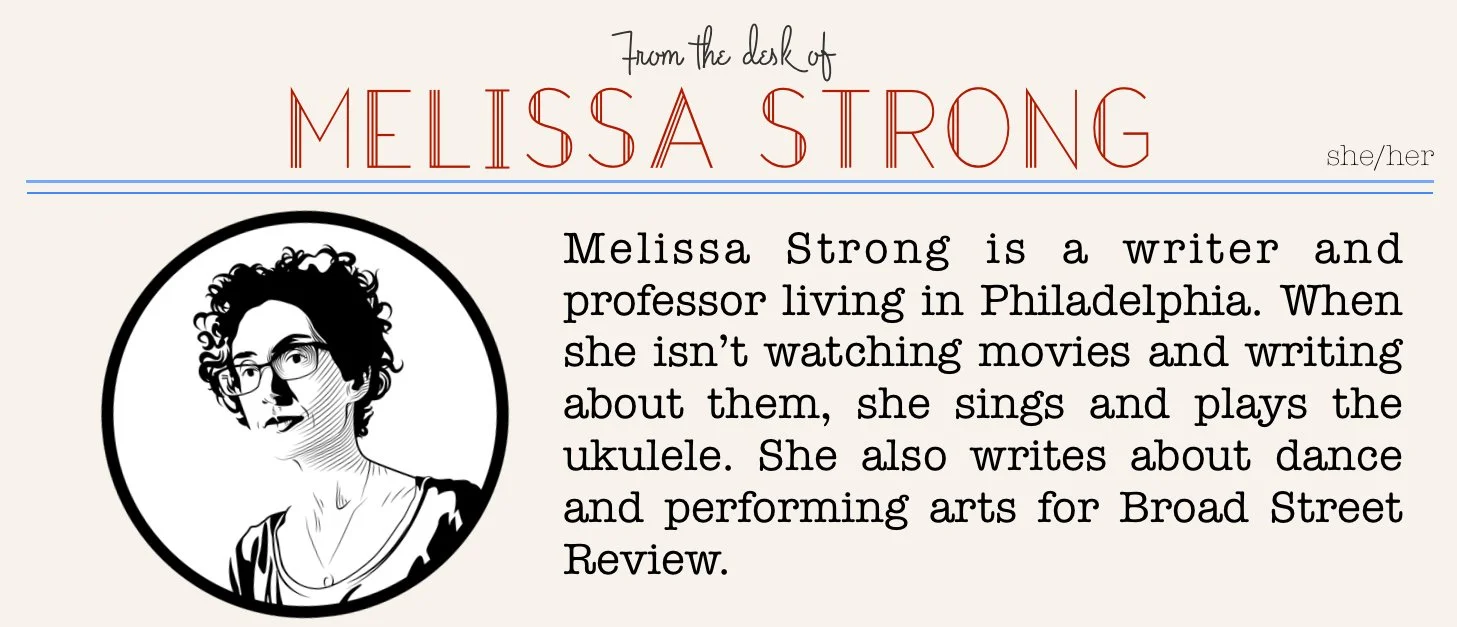A GIRL WALKS HOME ALONE AT NIGHT
by Melissa Strong, Contributor
A Girl Walks Home Alone at Night (2014), written and directed by Ana Lily Amirpour, is the movie I didn’t know that I needed this spooky season, a black-and-white delight of a feminist Iranian vampire western. It might be yours too, whether you like your fanged folx sexy ‘n charismatic or Byronic ‘n brooding, and even if you prefer werewolves. Rarely do I find myself so pleasantly surprised by a movie. Let’s explore elements of complexity and greatness in A Girl Walks Home Alone at Night.
The setting: A fictional Iranian ghost town called Bad City echoes the desolate, lonely, and cursed qualities of the protagonist, a vampire known as The Girl (Sheila Vand). Recurring images of active oil wells strike a parallel with The Girl sucking the lifeblood from her victims just as the drills extract precious resources from the earth. Amirpour filmed in Southern California rather than Iran, where censorship rules restrict media content deemed offensive or immoral, and Bad City has the look and feel of a place stranded between cultures. Characters include a pimp, a sex worker, and a person addicted to drugs, and all their dialogue is in Persian. Bad City also seems lost in time as narrative, costuming, set design, and cinematography obscure the temporal setting. For instance, the movie introduces Arash (Arash Mirandi), the addict’s dutifully enabling son, with the aesthetics of a 1950s American movie star. His classic car and tight, white t-shirt recall James Dean and a young Marlon Brando. Meanwhile, other characters sport neck tattoos and nose splints – rhinoplasty is popular in Iran – that work to establish the setting in the present.
The vampire: The Girl also seems lost in time, which makes sense for the undead. She says very little throughout the film, and her reticence suggests the world-weariness of one who has seen a lot over many, many years. A collection of vintage music posters reflects her super-human longevity and also develops her personality. The Girl shares Arash’s affinity for retro style, which foreshadows their eventual connection. Her classic bateau mariniere and bob cut evoke silver screen style icons like Audrey Hepburn and Brigitte Bardot. But every time she steps outside, The Girl covers these with a chador that billows around her, signifying Islam while resembling Dracula’s cape. She rides a skateboard because why not? And like Dexter from the Showtime series, The Girl picks off those who hurt people.
The transgressions: Purposely choosing victims increases The Girl’s power as she combines vigilante justice with her need to feed. The victims are men because men possess more power, therefore, they abuse it more often. This is the most realistic aspect of the film. Let’s face it: women can and do harm others, but when was the last time you heard about a female politician or CEO having sex with minors or addressing an employee as “Big Tits”? Amirpour has resisted feminist interpretations of A Girl Walks Home Alone at Night, and it appears this has less to do with the f-word than avoiding reductive readings. The movie is feminist in many ways, from The Girl’s complex, genre-defying character to her supernatural ability to safely wander a city at night. She also protects Atti (Mozhan Marnò), the sex worker. Ultimately, The Girl uses her power to make Bad City safer and better for everyone, including Rockabilly (Reza Sixo Safai), a minor but important character. Rockabilly is gender non-conforming and – according to Amirpour – gay, making them a vulnerable outsider in many places and a criminal in Iran. Yet a scene where Rockabilly defiantly dances alone in the streets hints that they may be as powerful as The Girl in their own way.
The romance: The romance between The Girl and Arash adds to the transgressive qualities of A Girl Walks Home Alone at Night by adding more layers to the plot and main characters. The couple meets as cute as possible in Bad City, noticing each other on a deserted street while she stalks prey and he heads home from a costume party (dressed as Dracula, natch). In my favorite scene, Arash gives The Girl a pair of stolen diamond earrings. But she can’t wear them, so she directs Arash to pierce her ears on the spot. The intimacy they share in this moment is memorable, and it’s uncommon in most American movies. Not all vampires are European, and vigilantes need love, too. Eat your hearts out, Bella and Edward.


